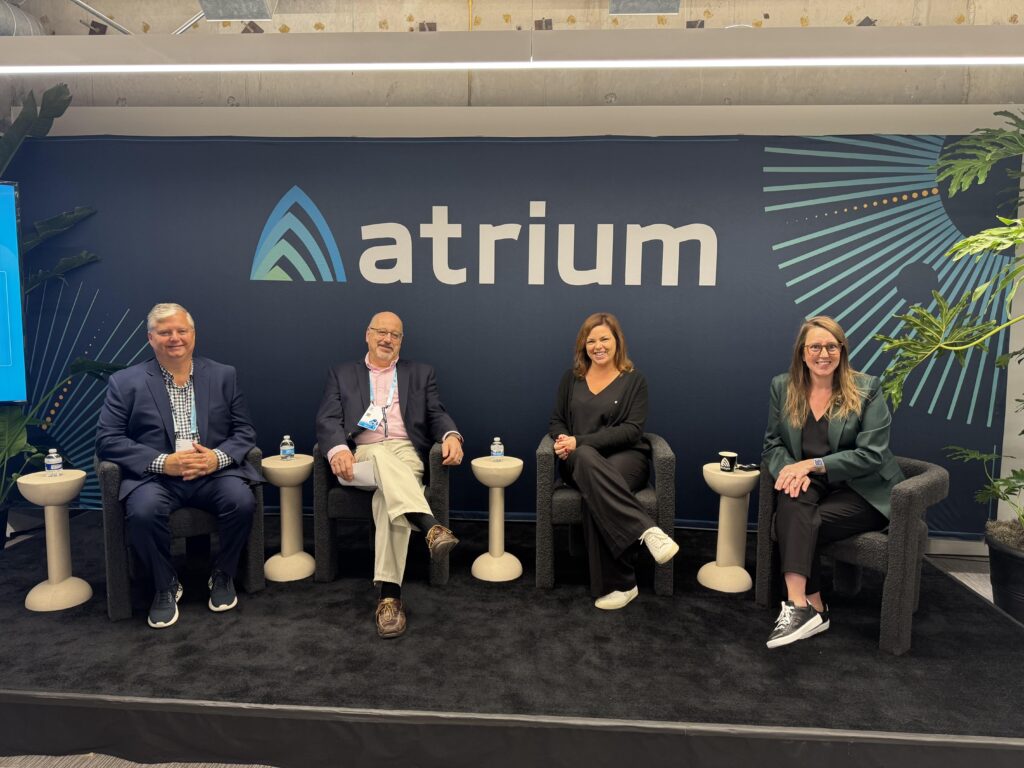If you’ve ever been through a Salesforce rollout, you know the story rarely unfolds the way it’s written in the playbook. There’s the energy of kickoff day, the promise of a single pane of glass, and then the reality hits — the weight of transformation as you start to untangle data, process, and people.
At Dreamforce 2025, two banks told that story in very different ways. Liberty Bank, a 200-year-old community institution in Connecticut, and Dollar Bank, a 170-year-old mutual in Pittsburgh, joined me and Salesforce in the Atrium Lounge to talk about what happens after the executive buy-in, during the pivots, and before the wins show up in the KPIs.
What stood out most in these conversations was the honesty. No one claimed perfection. What they shared was far more valuable: how leadership, culture, and design decisions shape the difference between a system launch and a lasting transformation.
Both banks are using Salesforce to modernize how they serve their customers, and both have proved that meaningful change looks less like a single milestone and more like disciplined, ongoing progress.
Here’s what we can learn.
Start with clarity, not the technology
For Liberty, transformation started with a simple goal: unite the bank under one experience. They wanted every line of business (retail, commercial, treasury, contact center, and investments) to operate on the same platform. The idea wasn’t about tools; it was about consistency and connection.
Dollar Bank’s starting point was different but just as focused. They built around service, because that’s what defines their brand. Instead of chasing sales automation, they asked how Salesforce could strengthen the care and trust they’ve built over generations.
Both programs worked because they began with a purpose that mattered. When people understand why the change is happening, technology becomes the enabler, not the story.
Change management is the program
At Dollar Bank, change management wasn’t a side effort. It was the core of the rollout. With a workforce that has deep tenure and pride in how things are done, success meant bringing everyone into the process early and often. They told the story, measured what mattered, and celebrated progress.
Liberty took a different path to the same lesson. Midway through their program, they realized the approach needed a reset. Rather than pushing ahead, they paused to realign. They built stronger internal ownership, added experienced guidance, and re-anchored the work around people and process before touching technology again. That moment of honesty set the foundation for everything that followed.
Change management isn’t a communications plan. It’s the work of building belief, ownership, and confidence in the direction the organization is moving.
 From left to right: Amir Madjlessi, Marc Sylvain, Pamela Hannett, Valeries Weis
From left to right: Amir Madjlessi, Marc Sylvain, Pamela Hannett, Valeries Weis
Build with the people who actually use the technology
At Dollar Bank, the design process started on the front line. The platform owner and her team met with call center agents and bankers to understand the friction points in their daily work. They tested early and in the open, letting real users validate what worked. That approach created immediate credibility and made adoption a non-issue.
Liberty built its Center of Excellence inside the business for the same reason. The COE became the hub for feedback, transparency, and standards. Business leads and admins worked side by side, shaping releases that reflected real operational needs.
When users have a voice in how systems are built, they own the outcome. Engagement isn’t something you chase later; it’s something you create from day one.
Architect before you automate
Both banks learned that technology isn’t the hardest part. Integration and data always take center stage.
Liberty started with basic connections between core systems and Salesforce, but quickly realized that point-to-point integration limits flexibility. They stepped back and approached it as a data architecture problem, aligning structures and definitions before writing more code.
Dollar Bank took a similar stance by refusing to digitize existing inefficiencies. They reviewed processes, simplified handoffs, and mapped the customer journey before building anything. It slowed the initial pace but accelerated adoption because the foundation was right.
Getting architecture right early prevents rework later. The way data flows defines how a bank sees its customers and how employees can serve them.
 From left to right: Jim Collins, Joe Toth, Heather Maples, Valeries Weis
From left to right: Jim Collins, Joe Toth, Heather Maples, Valeries Weis
Build trust before AI
Both organizations see AI on the horizon. Dollar Bank is putting structure around governance and policy before adding new tools. Liberty is building toward AI-assisted work through Agentforce, focusing first on data readiness, content accuracy, and employee enablement.
They’re not treating AI as a quick layer of innovation. They’re treating it as an extension of…
Source link




